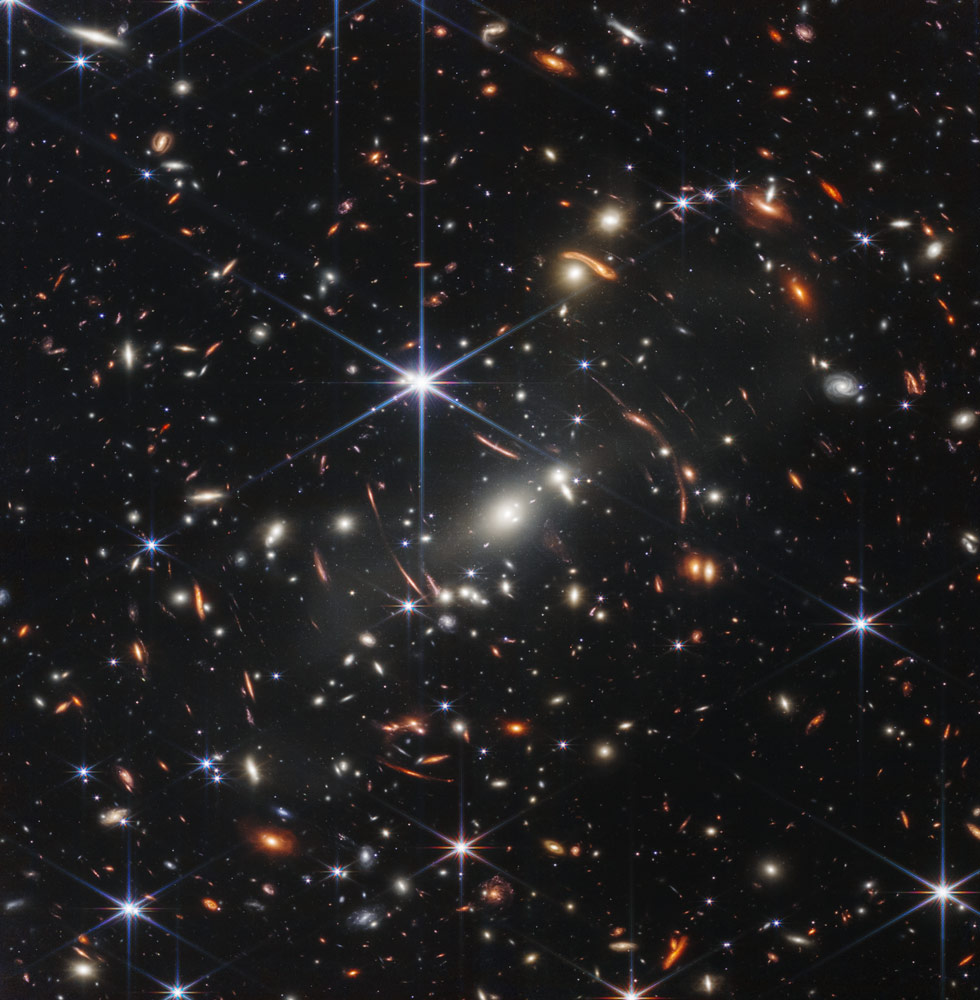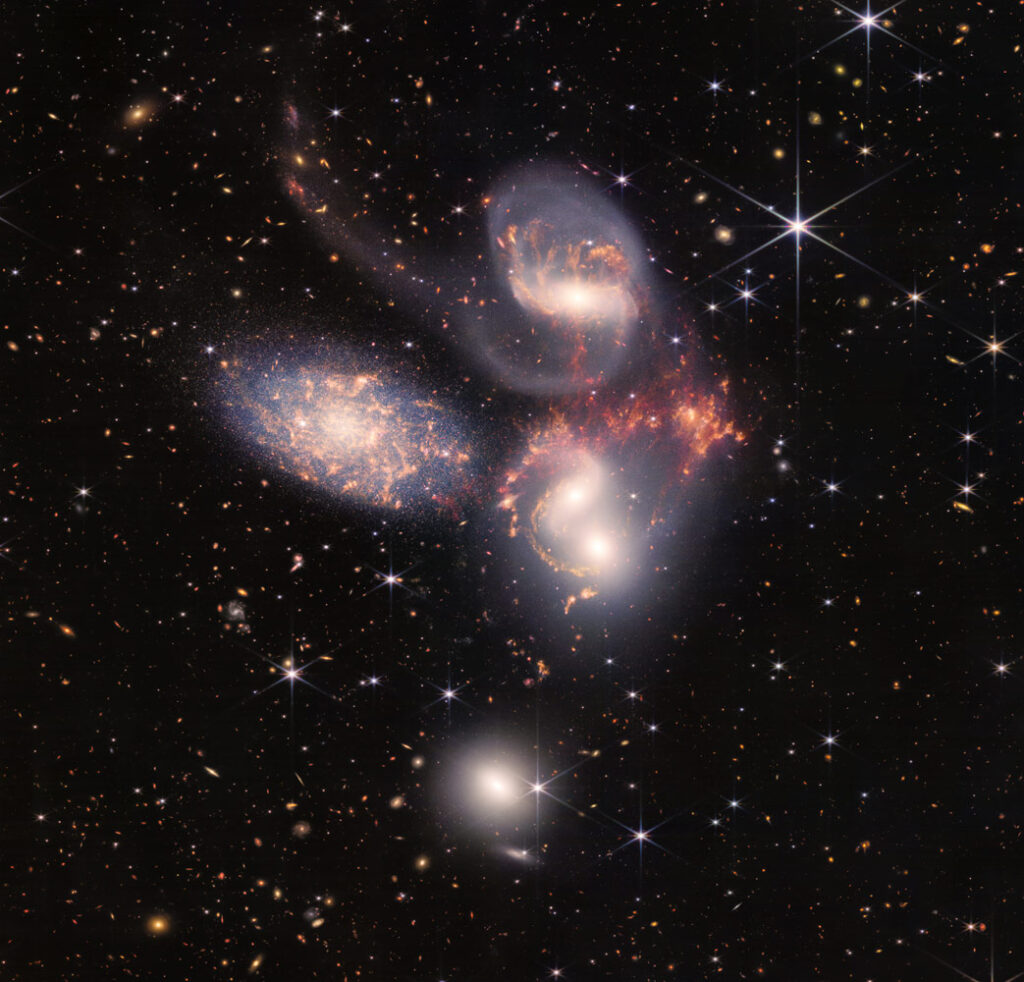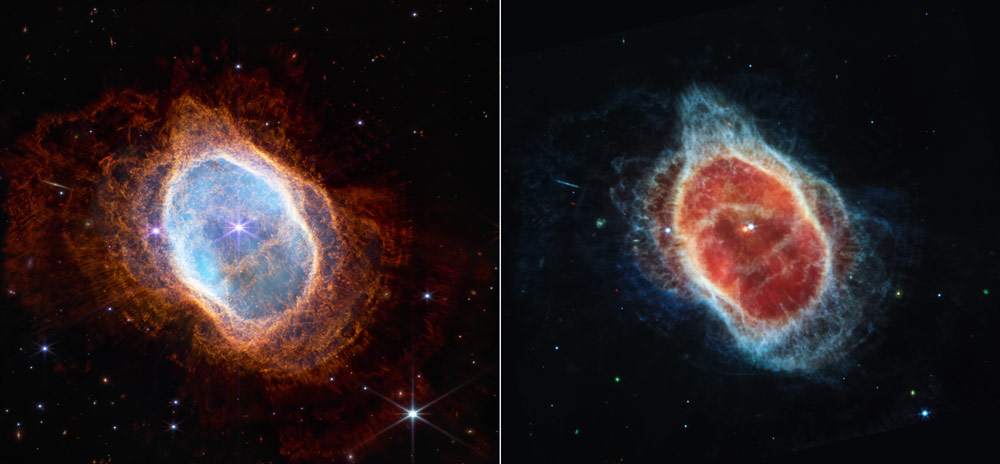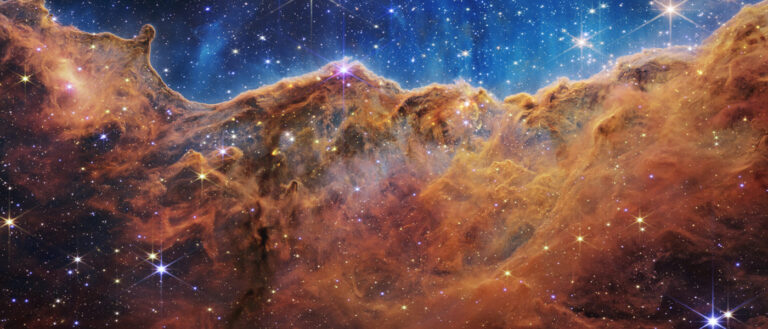It’s easy to feel small while looking at the first images taken by NASA’s James Webb Space Telescope, the largest and most powerful space science telescope ever constructed.
The five images, released earlier this week, tell the story of the hidden universe through every phase of cosmic history—from neighboring planets outside our solar system, to the most distant observable galaxies in the early universe (formed 13 billion years ago).
To learn more about the significance of these images, The Daily tapped into the expertise of Chris Mihos, the Worcester R. and Cornelia B. Warner Professor of Astronomy at Case Western Reserve University.
Using observational data from ground- and space-based telescopes combined with state-of-the-art computer modeling, Mihos studies the evolution of galaxies and galaxy clusters. Mihos has used CWRU’s wide-field Burrell Schmidt telescope to survey the nearby Virgo cluster of galaxies for the ghostly intracluster light that traces the history of galaxy collisions inside the cluster.
Read on to gain a deeper understanding of each of these awe-inspiring photographs.
1. Webb lets us look back in time and see how stars and galaxies first started to form in the universe.

The very faint red smudges you see in the “Webb Deep Field” image are galaxies so small and so distant that it has taken their light billions of years to get to us—we see them as they looked like 13 billion years ago, when the universe was in its infancy. But because the universe is expanding, that light has also been “stretched” along the way, converting the visible starlight into infrared light.
Webb’s enormous mirror and ability to take images in infrared light means we can finally see these very distant, young galaxies and witness how the universe began forming stars and galaxies at the very beginning of its history. In many cases, the light from these distant galaxies has been bent and distorted along its way to us by the gravity from the galaxy cluster along the line of sight (the fuzzy white objects), smearing the images of those distant galaxies into long reddish streaks and irregular blobs.
2. Webb can see into the dense dust clouds where stars and planets are forming today.
In our Milky Way galaxy and other galaxies, stars and planets form inside dense, dark clouds of gas and dust which normally obscure our view. But infrared light is not blocked by dust, so Webb’s infrared images let us peer into these stellar nurseries and see how stars form and how their planets form around them.
In Webb’s “Cosmic Cliffs of Carina“ image (shown above in the banner image), you can see where hot young stars are emitting so much energy that they blow out jets of hot gas, carving out bubbles and streams in the clouds that surround them. By studying these star-forming regions, we can learn about the earliest stages of star formation, and how the sun and its planets (including the Earth!) formed.
3. Webb sees both starlight and dust.

When dust clouds are heated by young stars, the dust glows brightly in infrared light. By taking images at different infrared wavelengths, Webb’s cameras are sensitive to light from both stars and dust.
In the image of the galaxy group “Stefan’s Quintet,” the smooth whitish light in the galaxies comes from the galaxies’ stars, while the patchy yellow/orange light comes from gas and dust clouds. These clouds have been heated by the collision between the galaxies, which generated shock waves and new star formation and the areas between the galaxies. (The galaxy on the left is actually not part of the group, but is much closer to us and just happens to be along our line of sight to the group.)
Fun fact: Stefan’s Quintet shows up in the holiday movie classic It’s A Wonderful Life, as the heavenly image used when the angels are talking with Clarence!
4. Webb’s new images show us not only stars that are forming—but also stars that are dying.

In the “Southern Ring Nebula” image, we see images of a star at the end of its life, pushing off its outer layers of gas and dust into a vast, expanding cloud known as a planetary nebula. At the center of the nebula is a pair of stars, and it’s the dimmer one that is dying, cloaked in a cloud of dust, while its brighter companion continues to orbit it.
When we look at this star system, we are witnessing the likely end stages of our own sun, which will run out of fuel and die in another 5 billion years, forming a planetary nebula much like the one seen in the Webb imaging.
5. Webb’s instruments can study the atmospheres of planets around distant stars, and the chemical composition of distant galaxies.
As planets orbit other stars, they sometimes pass between us and their host star, blocking some of the star’s light from getting to us. When this happens, certain wavelengths of light are blocked more than others, due to the kinds of atoms and molecules present in the planet’s atmosphere.
By studying the spectrum of the star while the planet is “in transit,” astronomers can work out what the composition is of these “exoplanet atmospheres.” In the case of the exoplanet WASP-96b, Webb found evidence for water in the planet’s atmosphere, as well as the presence of clouds and haze. We’re not far away from having exoplanet weather reports! And Webb’s reach isn’t limited to planetary atmospheres—its instruments can even measure the chemical composition of distant galaxies in the early universe!
Interested in studying planets, stars, distant galaxies and other celestial bodies? Discover undergraduate and graduate astronomy programs at Case Western Reserve University.

